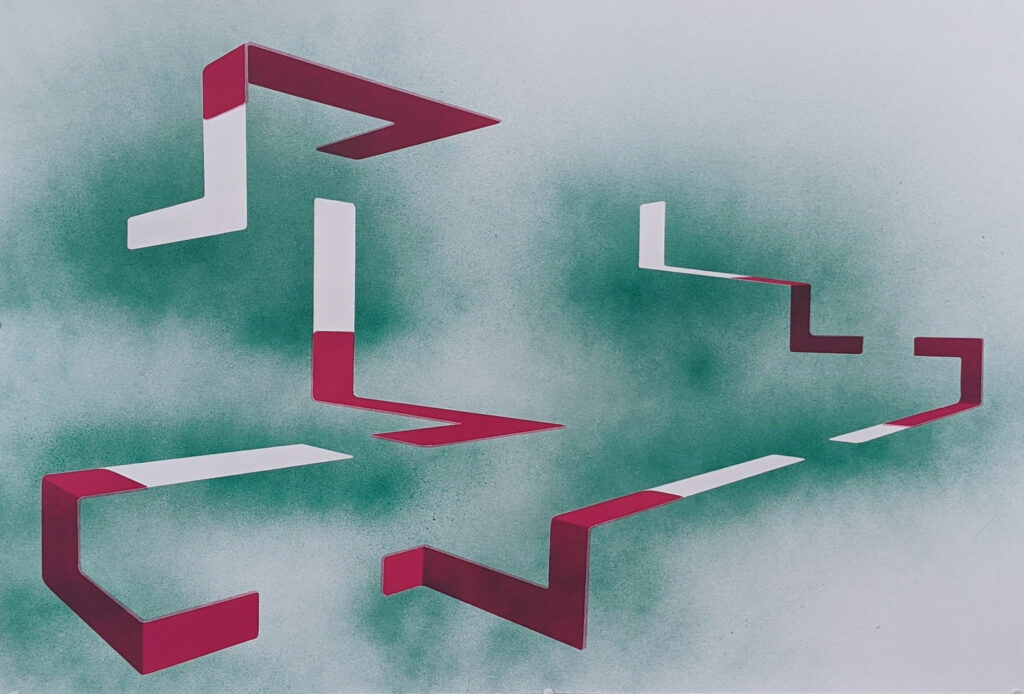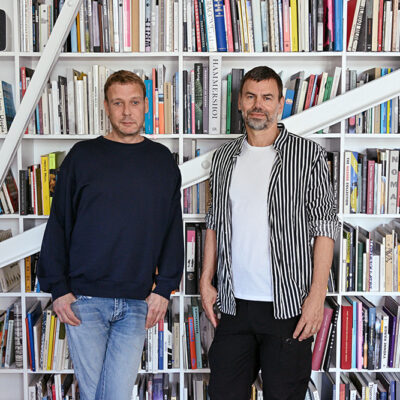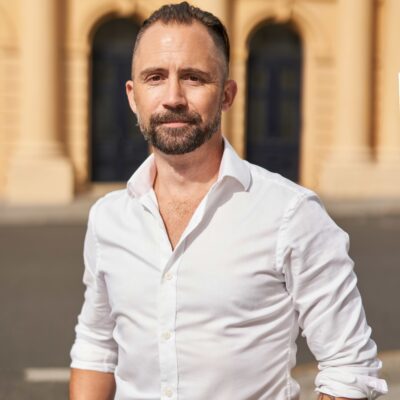Kristen Knupp for Art Vista Magazine: I know you were trained as an architect, how did you go from architecture to art, and what inspired you to make that transition?
Sarah Watson: I was an undergraduate at Yale University, which is not an art school, but they have an art department. I studied painting, and Yale is well-known for its master’s degree in painting, so many visiting professors were famous artists and I had a lot of exposure to that. I was committed to painting then, but after graduating I worked for a sculptor as an assistant, and then went to architecture school.
I am quite an academic and intellectual person, so in going to architecture school I was trying to marry my intellectual interests with visual things, as I always had a deep love for the built environment and cities. When I landed there, I was surrounded by people who always knew they wanted to design buildings, and that was never my passion. It was very interesting though, so I stayed and did my master’s degree. In my third year, I had Peter Eisenman as my professor, and then Frank Gehry who flew in every other week to spend time with us at our desks. It was a unique moment in the history of Yale Architecture School, because the Dean, Robert Stern, was friends with many famous architects. Zaha Hadid was also teaching there at the time. I learned a lot, but it has been good for me personally to go back to making two-dimensional art because it is what I always wanted to do. Of course, it is influenced by my training and experience studying and working as an architect. The subject matter has remained.

KK: You were part of a show at the Centre D’Art Contemporain Genève called Lemaniana: Reflections on Other Scenes from March to August, 2021. Tell me how you came to be involved in the show?
SW: That was a stroke of luck, to be honest. The Centre D’Art had an open call which is incredibly rare these days. The idea of Lemaniana was that it was meant to be a snapshot of artistic production in the Arc Lémanique. Not just people living here now, but people who have studied or are from here. I didn’t have high hopes because I called to chase up my application in January and the person on the phone laughed and said they had gotten more than 800 submissions. So I wasn’t expecting anything, but it was a privilege to be picked. There were a lot of young artists, because two of the curators are Deans of ECAL and HEAD. Many people were more known by the jury so it was an honour to be chosen.
As a result, many other things have happened for me. There was a catalogue produced for the show which was nice. In addition, they are doing a limited edition print of one of my paintings, and they have a group of supporters who will receive it as a gift. So that is amazing. It has been great for me since I only started making work again 2 1/2 years ago, so I am at the beginning.

KK: Your work reminds me of Tess Jaray’s work and also Dean Monogenis’s pieces. Which artists inspire you in your work?
SW: There is a friend of mine who is quite well known now, Keltie Ferris, whose work I look at. In a way, I also look more at work that is different from mine, to catch up, since I was out of the fine arts world for a time. I want to have a global look at what is going on right now, and cast a broader net.
I’ve also been thinking about the work of a Geneva-based artist named Nicholas Fournier, who has an almost anthropological way of looking at news events and the scientific world. He has an amazing density of outside content in his work which I find interesting. When working as an architect, there is always a research-based component, and I would like to marry my intellectual and bookish side with my work. I’m going to try to work on a new project in that direction. That is the long game for me.
KK: How was the Portes Ouvertes in Nyon? Was it beneficial for you, was there good attendance, will you do it again?
SW: First of all, I am very grateful to the organisers, they put a lot of effort into it. I would also say it was a great opportunity to meet the other people making art in the region. I met a local architect, a graphic designer, and made those connections which are really helpful. Every moment when I thought I would go out of my studio someone came in to see my work, so it was a steady stream of people. It is nice to see people in their workspaces because you see their thought processes, and it is less about looking at their techniques and more about occupying their world. What they are looking at, what they have pinned up for themselves, their sketches; all the things you don’t typically see in the gallery space.

KK: What are your next plans, do you have any exhibitions planned?
SW: As I mentioned, I have a limited edition print coming out around Christmas time which is a gift for the supporters of the Centre d’art. I am not represented by a gallery at the moment because I have just restarted making work fairly recently. I would love to be represented, and it is nice to have paintings leave the studio. I sold one last week and it is nice to see them go to good homes.. I am looking at some new projects, including working with a ceramicist to make some pieces that I would turn into photographs.
KK: Have you thought about the NFT world?
SW: I have done a lot of research into it, in my typical fashion, and I find the environmental consequences rather disturbing. My work refers to digital space, but it isn’t digital work. I wouldn’t especially lean into the NFT project at the moment. I am, however, supportive of people making NFTs as a way to be paid for digital work.
Sarah Watson’s work can be found on her website or on Instagram.
Profile photo: copyright Michael Crook @NewHeritagephoto




